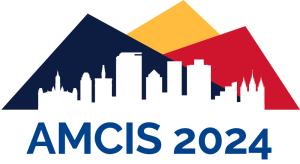Abstract
A great deal of research has been conducted to examine how users choose the appropriate communications media in the workplace. Media richness theory (MRT: Daft & Lengal, 1986) suggests that more rich media is used when there is equivocality in the information. Yet, El-Shinnaway and Marcus (1997) found that email is perceived by some as a rich media and was used even in high-ambiguity situations. Since then, the rise of text messaging, social media, and significantly more lean media have been developed and become commonly used for everyday social interactions and generational differences have emerged. Moreover, managers have traditionally been limited in their choice of communication media by organizational norms (Schmitz & Fulk, 1991) and resource restrictions (Trevino, Webster, & Stein, 2000). Yet, the advent of BYOD policies and the rise of the intergenerational workplace has resulted in more diversity than ever in communication media. But generational, cultural, and habit-based differences in media choice can lead to less effective communication in the workplace. Thus, it is important to re-examine the way in which employees choose to communicate given the multitude of options available with varying degrees of richness, synchronicity (Carlson & George, 2004), and social presence (Rice, 1993). This study examines characteristics of the message, the media, and the actor to examine the interplay of these factors in communications media choice. We combine survey items with a scenario-based method to elicit perceptions of the appropriateness of various media for various communication tasks in different contexts (i.e., work vs. social situations). The findings have implications for employees in their own communications and for organizational communication policy setting.
Paper Number
tpp1378
Recommended Citation
Ziegelmayer, Jennifer L., "Communication Media Choice: A Replication and Reexamination in the Intergenerational Workforce" (2024). AMCIS 2024 TREOs. 55.
https://aisel.aisnet.org/treos_amcis2024/55
When commenting on articles, please be friendly, welcoming, respectful and abide by the AIS eLibrary Discussion Thread Code of Conduct posted here.


